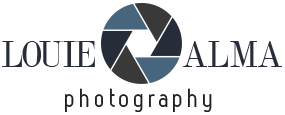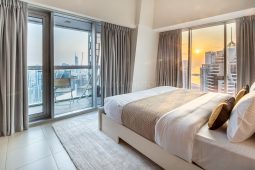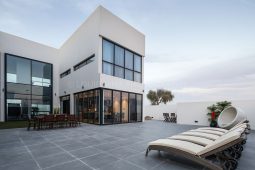Countries on the Foreign Office ‘do not travel’ list
For a smoother travel experience, there are three things you must have top of your mind: is your passport valid and in date? is your travel insurance still valid and covers the places you intend to visit and the activities you plan to partake in, and most importantly, that you are travelling somewhere safe, in other words, not included in the no-go areas listed by the Foreign, Commonwealth and Development Office (FCDO).
If you choose to go to a destination the FCDO advises against, your travel insurance will not cover you on that trip. Destinations appear FCDO no-go lists when there are natural disasters, political conflicts. Out of the 226 countries with travel advice pages, 74 are listed with no-go zones.
FCDO advises against all travel to the following destinations:
- Afghanistan
- Belarus
- Burkina Faso
- Haiti
- Iran
- Russia
- South Sudan
- Syria
- Yemen
FCDO advises against all travel to parts of:
- Algeria – all travel to within 30km of Algeria’s borders with Libya, Mauritania, Mali, Niger, Tunisia
- Armenia – within 5km of the full eastern border between Armenia and Azerbaijan
- Azerbaijan – Azerbaijan-Armenia border
- Benin – Northern border regions
- Burundi – Cibitoke and Bubanza provinces, Kayanza province and Bujumbura Rural province
- Cameroon – Bakassi Peninsula and within 40km of the Central African Republic, Chad and Nigeria borders
- Central African Republic – against all travel except to the capital, Bangui
- Chad – Borkou, Ennedi Ouest, Ennedi Est and Tibesti provinces, Kanem Province, including Nokou, Lake Chad region and within 30km of all Chad’s other borders
- Congo – within 50km of the Republic of Congo-Central African Republic border in Likouala Region
- Côte d’Ivoire – borders with Burkina Faso and Mali and Côte d’Ivoire-Liberia border
- Democratic Republic of the Congo – areas in Kinshasa Province, DRC-Central African Republic border, Eastern DRC, Kwamouth territory of Mai-Ndombe Province and the province of Kasaï Oriental
- Djibouti – Djibouti-Eritrea border
- Egypt – Egypt-Libya border and North Sinai
- Eritrea – within 25km of Eritrea’s land borders
- Ethiopia – international border areas, Tigray region, Amhara region, Afar region, Gambela region, Oromia region, Somali region, Central, Southern, Sidama and South West regions and Benishangul-Gumuz region
- Georgia – South Ossetia and Abkhazia
- India – within 10km of the India-Pakistan border and Jammu and Kashmir
- Indonesia – Mount Lewotobi Laki-Laki, Mount Sinabung, Mount Marapi, Mount Semeru, Mount Ruang, Mount Ibu
- Iraq – advises against all travel to parts of Anbar province, Basra province, Diyala province, Kirkuk province, Ninawa province, Salah al-Din province, Sadr City and within 30km of federal Iraq’s borders with Iran, Syria, Saudi Arabia and Kuwait
- Israel – against all travel to Gaza, parts of the West Bank and Northern Israel
- Jordan – within 3km of the border with Syria
- Lebanon – areas in Beirut and Mount Lebanon Governorate, the South and Nabatiyeh Governorates, the Beqaa Governorate, the Baalbek-Hermel Governorate, the Akkar Governorate, the city of Tripoli and Palestinian refugee camps
- Libya – advises against all travel to Libya except for the cities of Benghazi and Misrata
- Mali – advises against all travel except to Bamako
- Mauritania – Eastern Mauritania and Mauritania-Mali border
- Moldova –Transnistria
- Mozambique – Cabo Delgado Province
- Myanmar (Burma) – Chin State, Kachin State, Kayah State, Kayin State, Mon State, Rakhine State, Sagaing and Magway regions, Tanintharyi Region, Shan State North, North Mandalay Region
- Niger – against all travel except to the capital city of Niamey
- Nigeria – Borno State, Yobe State, Adamawa State, Gombe State, Kaduna State, Katsina State, Zamfara State and the riverine areas of Delta, Bayelsa, Rivers, Akwa Ibom and Cross River states
- Pakistan – within 10 miles of the border with Afghanistan, areas in Khyber Pakhtunkhwa Province and the Balochistan Province
- Philippines – Western and central Mindanao and the Sulu archipelago
- Rwanda – Rubavu district and Rusizi district
- Saudi Arabia – Saudi Arabia-Yemen border
- Somalia – eastern Somaliland and Western Somaliland
- Sudan – against all travel except to the Hala’ib Triangle and the Bir Tawil Trapezoid
- Gaza, The West Bank and Northern Israel
- Togo – Togo-Burkina Faso border
- Tunisia – Western Tunisia, including the Tunisia-Algeria border and Southern Tunisia, including the Tunisia-Libya border
- Turkey – within 10km of the Turkey-Syria border
- Ukraine – all regions of Ukraine except for some western regions
- Venezuela – within 80km of the Venezuela-Colombia border, within 40km of the Venezuela-Brazil border, Zulia State
- Western Sahara – within 30km of ‘the Berm’ boundary line and south and east of the Berm boundary line
FCDO advises against all but essential travel
‘Essential travel’ is defined as follows: “Whether travel is essential or not is your own decision. You may have urgent family or business commitments which you need to attend to. Only you can make an informed decision based on your own individual circumstances and the risks.”
- New Caledonia
- North Korea
- Mayotte
FCDO advises against all but essential travel to parts
- Angola – Cabinda Province, border areas in Lunda Norte Province
- Bangladesh – Chittagong Hill Tracts
- Bolivia – Chapare region
- Brazil – Amazonas State
- Cambodia – within 50km of the border with Thailand in Oddar Meanchey and Preah Vihear provinces
- Colombia – borders, the Pacific coast and parts of central Colombia
- Ecuador – seven coastal region provinces, and within 20km of the Ecuador-Colombia border
- Ghana – Bawku Municipality
- Guatemala – within 5km of the Mexican border and the towns of Santa Ana Huista, San Antonio Huista and La Democracia
- Kenya – Kenya-Somalia border and northern parts of the east coast
- Kosovo – Zvečan, Zubin Potok and Leposavic, and the northern part of the city of Mitrovica
- Laos – Xaisomboun Province
- Malaysia – Eastern Sabah coastal islands
- Mexico – Baja California, Chihuahua, Sinaloa, Tamaulipas, Zacatecas, Guanajuato, Michoacán, Jalisco, Colima, Guerrero, Chiapas
- Papua New Guinea – Hela and Southern Highlands provinces
- Peru – within 20km south of the Peru-Colombia border and the Valley of the Apurímac, Ene, and Mantaro River
- Tanzania – Mtwara Region along the Tanzania-Mozambique border
- Thailand –parts of the south, near the Thailand-Malaysia border and within 50km of the border from Cambodia
- Uganda – Queen Elizabeth National Park, the area immediately south-west of Kasese town and Semuliki National Park
The post Countries on the Foreign Office ‘do not travel’ list appeared first on The Travel Magazine.




